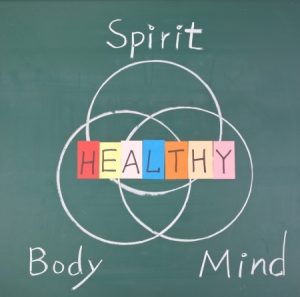What’s on your mind when you exercise?
We all exercise for different reasons. Sometimes our reasons vary with the workout itself: perhaps we prefer training biceps and triceps instead of quads, simply because we can see progress developing more easily. Clients often report that nothing kicks their endorphins into high gear like a good 3-mile outdoor run on a perfect spring morning.
Whatever the motivation, we can all recognize that our bodies need the physical release that exercise provides, the uniquely powerful sensation that we have pushed our muscles beyond their limits and conquered the next level of strength or endurance.
 What about working out our minds? How do we match this physical challenge in the cerebral realm? Contrary to popular belief, the answer is much more complex than simply doing crossword puzzles on a daily basis.
What about working out our minds? How do we match this physical challenge in the cerebral realm? Contrary to popular belief, the answer is much more complex than simply doing crossword puzzles on a daily basis.
“Mindfulness” is a popular term typically tossed around in association with meditation, yoga and practices of spirituality. Its pure definition often remains elusive. However, in the world of Experimental Psychology, the idea of mindfulness can be described as controlled attentiveness, a deliberate awareness of what is happening when we are present in the moment. In recent years, scientists have found many associations between mindfulness and physical health.
The irrefutable connection between mind and body can be traced all the way back to Hippocrates in Western science. As medicine moved forward this notion of the coupling of mind and body was brought to light even further by Dr. Herbert Benson. In his formal documentation known as The Relaxation Response, Dr. Benson expounds upon the physical effects of meditation: slower breathing, reduced heart rate, and a quieting of brain activity. Today, meditation is often thought of as simply sitting still; but if we recognize its role in the practice of Chinese martial arts and yoga, we come to observe that mindfulness is anything but static in nature.
Just like during meditation, your mind can wander in the midst of your workout. This happens more often than we may realize. Maybe we find ourselves inaudibly singing the words to a song playing through the fitness center’s speakers. Perhaps a particularly buff individual has caught our eye from across the weight room floor. Even a cute puppy encountered on an intense run through the park may cause us to momentarily lose focus on the task at hand. But again, similar to when meditating, sometimes the most important thing to do at the gym is to bring your attention back to the workout and simply let go. Soon you discover that the more you corral and focus your attention on the present moment, getting in touch with the rhythm of your body as it moves the demanding weight loads, it becomes possible to emerge yourself deeper. Without realizing it, the inner space in your soul opens up. There comes over you a calmness and clarity when you consciously focus attention solely upon one thing. You may soon feel more integrated and less scattered, and this seems to enable you to harness even more energy for the physical task at hand.
Spiritual guidance experts often speak of harnessing one’s breath as one attempts to discover inner quiet. Breathing practices help to expand the capacity of the lungs, thereby allowing the breath to become more adaptable. This same principle can apply to physical manifestations as well. Visual imagery can help to create a positive association with movement, which can over time improve the outcome of exercise. Consider for a moment what truly separates the highest level of athletes from the average elite competitive warrior.
At the upper echelon of peak performance, it might be hard to tell the differences between each athlete in terms of their physical abilities. The difference appears through the refinement of their own ability to concentrate and stay calm under pressure. Many experts in sports psychology agree that professional athletes and Olympians are experts at mindfulness, since they are consistently being required to harness mind and body at levels of balance and integration that most of us mere mortals simply cannot fathom.
Martial artists and Indian yogis have through the centuries honed the technique of using their bodies to bridge the physical and the metaphysical worlds. Their premise is simple: pushing through physical boundaries engages and allows the liberation of inner resources that often remain hidden when we allow our minds to scatter. Concepts such as tenacity, intention, drive, focus, and willpower are all present; we simply need to be taught how to access and activate these resources. The highest goal is to harness this inner strength to keep us going when we feel challenged. Breaking through that physical inertia with exercise can help open the mind and sharpen awareness.
Scientists have long pondered the question of why some individuals possess the capacity to stick with exercise and others do not. In research studies of exercise behavior, one of the most reliable indicators of whether people will continue to exercise is whether or not they find the workout to be a satisfying experience. In other words, what leads some individuals to honestly derive enjoyment from active pursuits?
REFERENCES:
- http://www.huffingtonpost.com/2013/01/14/spinning-yoga-fitness-classes_n_2470451.html
- http://www.mindfulstrength.com
- http://www.ithaca.com/living/fit-in-both-mind-and-body-combining-exercise-with-a/article_598d42ae-caa8-11e5-92b0-5781df925242.html
- http://aboutmeditation.com/mindfulness-techniques-5-reasons-meditation-exercise-go-together/
- http://well.blogs.nytimes.com/2015/02/18/how-mindfulness-can-jumpstart-our-exercise-routines/?_r=0
- http://www.mindfulfitness.com
- http://www.oxygenmag.com/article/balanced-fitness-tougher-brain-8644
- https://www.ornish.com/zine/bringing-meditative-mindset-exercise/
Cathleen Kronemer is an NFPT CEC writer and a member of the NFPT Certification Council Board. Cathleen is an AFAA-Certified Group Exercise Instructor, NSCA-Certified Personal Trainer, ACE-Certified Health Coach, former competitive bodybuilder and freelance writer. She is employed at the Jewish Community Center in St. Louis, MO. Cathleen has been involved in the fitness industry for over three decades. Feel free to contact her at trainhard@kronemer.com. She welcomes your feedback and your comments!

